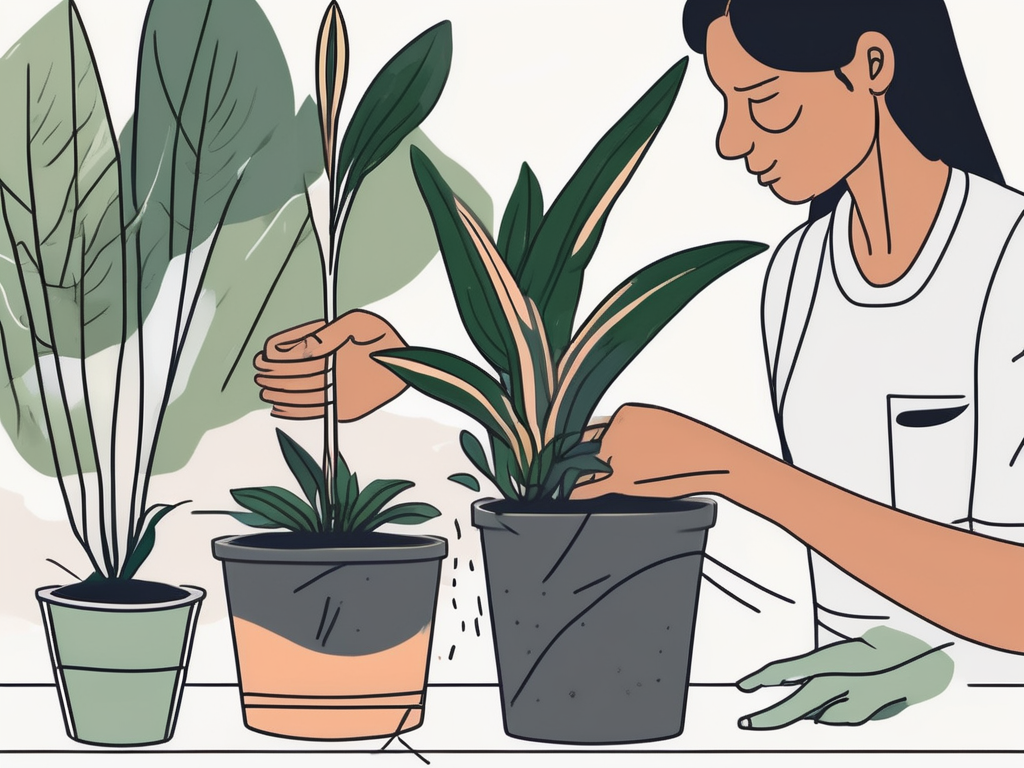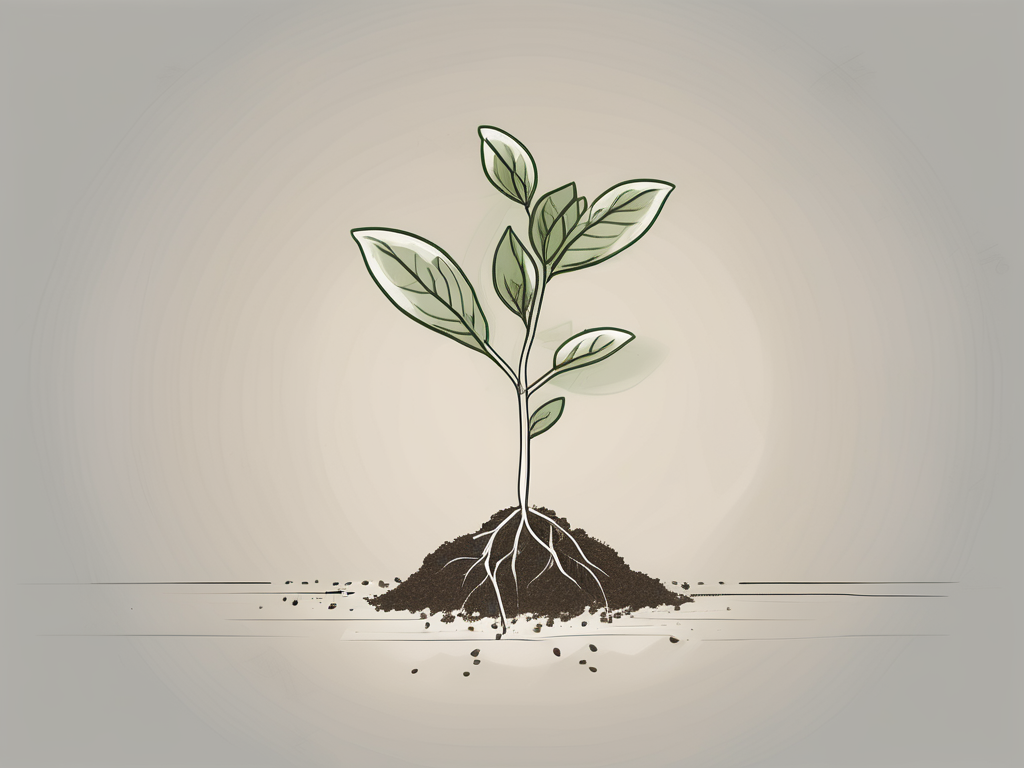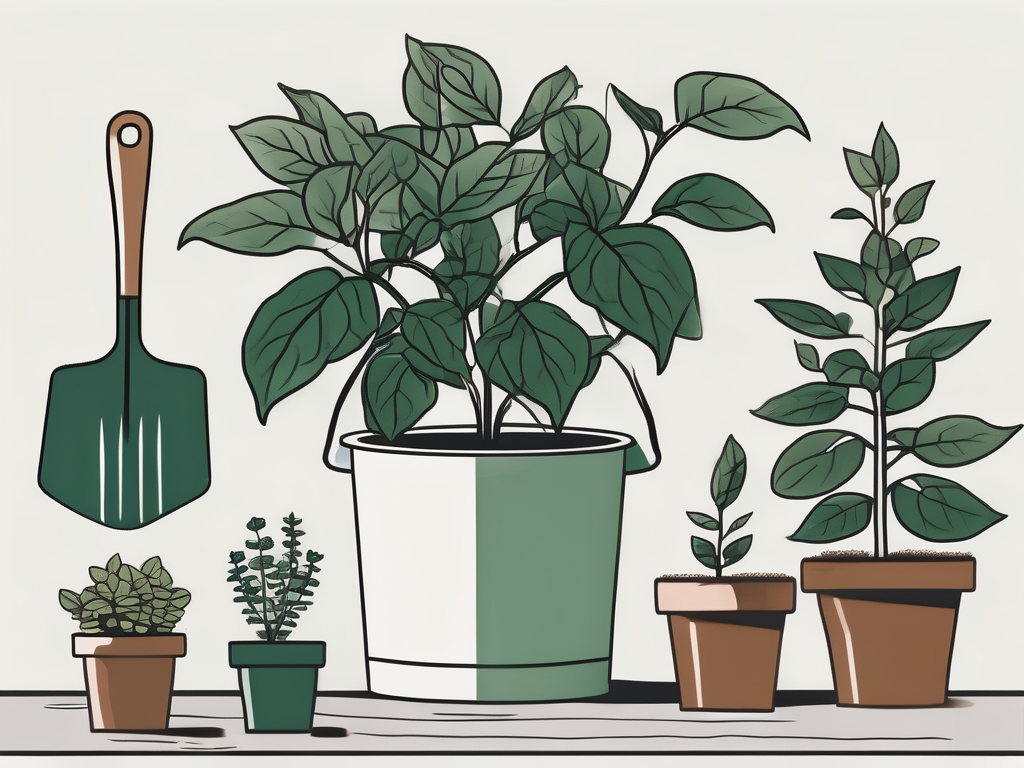
Who doesn't love the vibrant and eye-catching Stromanthe Triostar? With its stunning pink, green, and cream-colored leaves, it's no wonder it's a favorite among plant lovers. However, keeping this beauty thriving requires a bit of care, especially when it comes to repotting.
In this post, we’ll walk you through the process of repotting your Stromanthe Triostar. We’ll cover everything from the best time to repot to step-by-step instructions and tips to ensure your plant stays happy and healthy.
When to Repot Your Stromanthe Triostar
Timing is everything when it comes to repotting any plant, and the Stromanthe Triostar is no different. So how do you know when it’s time for a new pot? Here are some signs to watch for:
- Roots are growing out of the drainage holes: If you notice roots poking out from the bottom, it’s a clear indication that your plant is root-bound and needs more space.
- Soil dries out too quickly: If the soil seems to be drying out faster than usual, it could be because the roots have taken over and there's not enough soil to retain moisture.
- Stunted growth: If your plant isn't growing as vigorously as before, it could be telling you it’s cramped and needs more room to spread its wings (or roots, in this case).
Spring is typically the best time to repot your Stromanthe Triostar. This is when the plant is emerging from its dormant winter phase and gearing up for new growth. Repotting during this time can help it recover faster and thrive.
Gathering Your Supplies
Before you jump into repotting, it’s essential to gather all the necessary supplies. Here’s a checklist to get you started:
- A pot that’s one size larger: You don't need to go too big. A pot that's about 1-2 inches larger in diameter than the current one is ideal.
- Fresh potting mix: A well-draining potting mix is crucial. You might consider a blend that includes peat, perlite, and some orchid bark for added aeration.
- Gardening gloves: These can protect your hands and help you get a good grip on your plant.
- A small trowel or spoon: Useful for loosening the soil around the plant.
- Watering can: You’ll want to water the plant after repotting.
- Pruning shears: Handy for trimming any dead roots or leaves.
Having everything ready before you start makes the process smoother and less stressful for both you and your plant.
Preparing the New Pot
Before you transfer your Stromanthe Triostar into its new home, you need to prepare the pot. Start by making sure the pot has drainage holes. These holes are vital for preventing water from accumulating at the bottom, which can lead to root rot.
Next, add a layer of fresh potting mix to the bottom of the pot. It doesn't need to be too thick—just enough to lift the plant to the right height. You’ll want your plant to sit at the same level it was in the old pot, with its crown slightly above the rim.
If you’re using a pot with large drainage holes, consider placing a piece of mesh or a coffee filter over the holes. This will help keep the soil from washing out while still allowing water to drain freely.
Removing the Plant from Its Current Pot
Now comes the fun part—getting your Stromanthe Triostar out of its current pot. It might seem a little tricky, but with patience, you can do it without damaging your plant.
- Water the plant: A day before repotting, water your plant thoroughly. This makes the soil easier to work with and helps reduce stress on the roots.
- Gently squeeze the pot: If it’s a plastic pot, gently squeeze the sides to loosen the soil and roots. For ceramic pots, use a small trowel to carefully loosen the soil around the edges.
- Turn the pot on its side: Lay the pot on its side and gently slide the plant out, supporting the base with your hand. If it's stuck, give the pot a few gentle taps on the sides to dislodge the root ball.
Patience is key here. You don't want to rush and risk breaking the roots or stems. Once out, take a moment to admire those beautiful roots before moving on to the next step.
Inspecting and Pruning the Roots
Before plopping your Stromanthe Triostar into its new pot, take a moment to inspect the roots. Healthy roots are firm and white. If you spot any brown or mushy roots, these should be trimmed away as they can lead to rot.
Here’s how to go about it:
- Use clean, sharp pruning shears: Sterilize your shears with rubbing alcohol to prevent the spread of disease.
- Trim away dead roots: Cut back any dead or damaged roots, making clean cuts to promote healthy new growth.
- Loosen the root ball: Gently tease apart any tightly bound roots. This encourages them to spread out in their new pot, helping your plant establish more effectively.
Dealing with the roots might seem a bit intimidating, but once you get the hang of it, you'll find it’s an essential step in keeping your plant healthy.
Placing the Plant in the New Pot
With the roots all spruced up, it’s time to introduce your Stromanthe Triostar to its new pot. Here’s a quick guide:
- Position the plant: Place the plant in the center of the new pot, ensuring it’s at the same depth as it was before. Hold it steady with one hand as you add soil.
- Fill in with potting mix: Gradually add soil around the plant, gently packing it down as you go. Be careful not to bury the crown of the plant.
- Leave some space at the top: Leave about an inch of space from the rim of the pot to allow for watering.
Once your plant is in place, give the pot a gentle tap on the ground to help settle the soil. A quick, gentle shake can also help eliminate air pockets around the roots.
Watering After Repotting
After repotting, watering is the next crucial step. Your Stromanthe Triostar will need a good drink to help it settle in. Here’s how to do it:
- Water thoroughly: Water the plant until you see water draining from the bottom. This ensures the roots get a good soak.
- Check the soil moisture: Use your finger to check the soil moisture a few inches down. You want it to feel moist but not waterlogged.
- Be cautious of overwatering: While it’s important to water after repotting, be careful not to water too frequently. Allow the top inch of soil to dry out before watering again.
Remember, the goal is to keep the soil evenly moist. Overwatering can be just as damaging as underwatering, so keep an eye on your plant’s watering needs, especially in the weeks following repotting.
Adjusting Light and Humidity
Stromanthe Triostars are a bit fussy about their environment, so after repotting, you’ll want to ensure they’re getting the right light and humidity levels.
- Indirect bright light: These plants love bright, indirect light. Too much direct sunlight can scorch their lovely leaves, while too little can stunt their growth.
- Boost humidity: Stromanthe Triostars thrive in high humidity. Consider placing a humidifier nearby or using a pebble tray filled with water to increase the humidity levels.
- Avoid drafts: Keep your plant away from drafty windows or air vents, as sudden temperature changes can stress them out.
Monitoring the light and humidity levels can be a bit of a balancing act, but once you find the sweet spot, your Stromanthe Triostar will reward you with vibrant growth.
Post-Repotting Care
Once your Stromanthe Triostar is nestled in its new pot and the initial repotting excitement has settled, it’s time to shift focus to its ongoing care.
- Feed sparingly: After repotting, give your plant a month to settle before introducing fertilizer. A balanced, water-soluble houseplant fertilizer every 4-6 weeks during the growing season should be enough.
- Monitor for stress signs: It’s normal for your plant to experience some shock after repotting. Keep an eye out for wilting or yellowing leaves, and adjust care as needed.
- Prune as needed: Remove any dead or yellowing leaves to encourage new growth and maintain the plant’s health and appearance.
Repotting can be a bit stressful for plants, so giving your Stromanthe Triostar some extra TLC in the weeks following its move will help it adjust and thrive.
Final Thoughts
Repotting your Stromanthe Triostar might seem like a daunting task at first, but with a little patience and the right approach, it can be a rewarding experience. By knowing when and how to repot, using fresh soil, and providing proper post-repotting care, you'll ensure your plant continues to add beauty to your home.
At Cafe Planta, we believe that plants have the power to bring people together and connect us with nature. Whether you're an experienced plant parent or just starting out, we’re here to support you on your plant journey. If you have any questions or need advice, feel free to email us or send us a message on Instagram. We're excited to help you create a thriving plant collection in your home.












